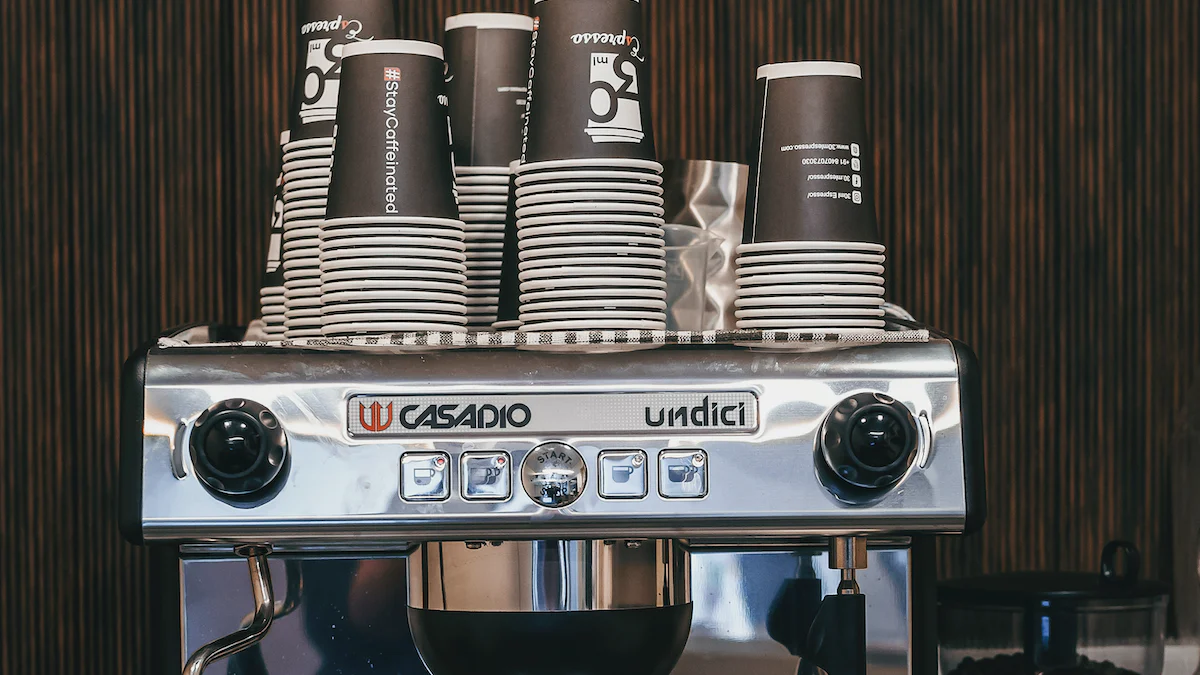FTC/ASA Disclosure: Some links in this post are affiliate links. At no additional cost to you, I will earn commission if you purchase via my links. Thank you in advance for your support! 🙏 It means a lot to me. ❤️
Understanding the basics of espresso is essential for anyone who wants to enjoy a great cup of coffee. Espresso is a concentrated form of coffee that is brewed by forcing hot water through finely ground coffee beans. It has a unique flavor profile and is the base for many popular coffee drinks such as lattes, cappuccinos, and macchiatos. By understanding the basics of espresso, you can learn how to choose the right beans, grind them properly, and use an espresso machine to create the perfect shot.
Key Takeaways
- Espresso is a concentrated coffee made by forcing hot water through finely ground coffee beans.
- Choosing the right beans for your espresso is crucial for achieving the desired flavor profile.
- Grind size and consistency play a significant role in the quality of your espresso shot.
- Mastering the espresso machine requires practice and understanding of its components and functions.
- Tamping techniques are essential for achieving perfect extraction and crema.
Understanding the Basics of Espresso
Espresso is a type of coffee that is brewed by forcing hot water through finely ground coffee beans. It originated in Italy in the early 20th century and quickly gained popularity around the world. The key characteristics of a good espresso shot include a rich and full-bodied flavor, a thick layer of crema on top, and a balanced taste with notes of sweetness, bitterness, and acidity.
Choosing the Right Beans for Your Espresso
When it comes to choosing beans for espresso, there are several factors to consider. First, you need to decide between Arabica and Robusta beans. Arabica beans are generally considered to be of higher quality and have a more complex flavor profile, while Robusta beans are stronger and more bitter. Next, you need to consider the roast level. Darker roasts tend to have a more intense flavor that can stand up to the brewing process, while lighter roasts may be too delicate. Finally, you should look for beans that are fresh and have been stored properly.
The Importance of Grind Size and Consistency
| Grind Size | Consistency | Impact on Coffee |
|---|---|---|
| Coarse | Inconsistent | Under-extracted, weak coffee |
| Coarse | Consistent | Properly extracted, balanced coffee |
| Medium | Inconsistent | Under-extracted, sour coffee |
| Medium | Consistent | Properly extracted, flavorful coffee |
| Fine | Inconsistent | Over-extracted, bitter coffee |
| Fine | Consistent | Properly extracted, bold coffee |
The grind size and consistency of your coffee beans can have a significant impact on the flavor of your espresso shot. If the grind is too fine, the water will have trouble passing through the coffee bed, resulting in an over-extracted shot that tastes bitter. On the other hand, if the grind is too coarse, the water will pass through too quickly, resulting in an under-extracted shot that tastes weak. To achieve the perfect grind size and consistency, you need to consider factors such as the type of grinder you are using, the brewing method, and the type of coffee beans.
Mastering the Espresso Machine
An espresso machine is a complex piece of equipment that requires some skill to operate properly. It consists of several parts, including a boiler, a group head, a portafilter, and a steam wand. To use an espresso machine, you need to start by preheating the machine and the portafilter. Then, you need to dose and distribute the coffee grounds evenly in the portafilter before tamping them down firmly. Once everything is set up, you can start the brewing process by activating the pump and extracting the espresso shot. Finally, you can use the steam wand to steam milk for lattes or cappuccinos.
Tamping Techniques for Perfect Extraction

Tamping is an essential step in the espresso brewing process that involves applying pressure to the coffee grounds in the portafilter. The goal of tamping is to create a uniform and compact coffee bed that allows for even extraction. To achieve the right tamp pressure and technique, you need to consider factors such as the type of coffee beans, the grind size, and your personal preference. It’s important to tamp with consistent pressure and avoid any unevenness or gaps in the coffee bed.
The Science of Milk Steaming for Latte Art
Steaming milk is an important skill for anyone who wants to create latte art. The process involves heating and frothing milk using a steam wand attached to an espresso machine. The goal is to create a smooth and velvety texture that can be poured into espresso shots to create latte art designs. To achieve the right milk texture and temperature, you need to consider factors such as the type of milk, the steam wand technique, and the desired outcome. It’s important to avoid overheating or over-frothing the milk, as this can result in a burnt or bubbly texture.
Troubleshooting Common Espresso Problems
Even with the best equipment and techniques, it’s possible to encounter some common espresso problems. These can include issues such as under-extraction, over-extraction, channeling, and uneven extraction. To troubleshoot these problems, you need to consider factors such as the grind size, the tamp pressure, the brewing time, and the water temperature. By making small adjustments to these variables, you can often fix the problem and achieve a better-tasting espresso shot.
Experimenting with Flavors and Syrups
Once you have mastered the basics of espresso brewing, you can start experimenting with different flavors and syrups to create unique and delicious drinks. There are many options to choose from, including flavored syrups, spices, extracts, and liqueurs. Some popular flavor combinations include vanilla and caramel, chocolate and mint, and hazelnut and almond. To experiment with flavors and syrups, you can add them directly to your espresso shot or mix them with steamed milk to create lattes or cappuccinos.
Cleaning and Maintaining Your Espresso Equipment
Proper cleaning and maintenance of your espresso equipment are essential for ensuring that it continues to perform well and produce great-tasting coffee. This includes regular cleaning of the portafilter, group head, steam wand, and other parts of the machine. It’s also important to descale your machine periodically to remove mineral deposits that can build up over time. Additionally, you should check for any signs of wear or damage and replace any worn-out parts as needed.
Perfecting Your Espresso Craftsmanship
Becoming an espresso craftsman takes time and practice, but with dedication and the right techniques, you can achieve great results. Some tips for perfecting your espresso craftsmanship include experimenting with different beans and brewing methods, seeking feedback from others, and continuously learning and improving your skills. It’s also important to have a passion for coffee and a genuine interest in the craft of espresso brewing.
Understanding the basics of espresso is essential for anyone who wants to enjoy a great cup of coffee. By learning about the history of espresso, choosing the right beans, mastering the use of an espresso machine, and perfecting your tamping and milk steaming techniques, you can create delicious and satisfying espresso shots. Additionally, by troubleshooting common problems, experimenting with flavors and syrups, and properly cleaning and maintaining your equipment, you can continue to improve your espresso craftsmanship over time. So go ahead, grab your favorite beans, fire up your espresso machine, and start brewing the perfect shot of espresso.
If you’re looking to make the perfect espresso, it’s important to start with the right coffee beans. In a related article on BrewHilda.com, you can learn about the different types of coffee beans and their effects on taste. Understanding the characteristics of various beans can help you choose the perfect blend for your espresso. Check out the article here to enhance your espresso-making skills.
Brewhilda.com is a participant in the Amazon Services LLC Associates Program, an affiliate advertising program designed to provide a means for sites to earn advertising fees by advertising and linking to Amazon.com.










